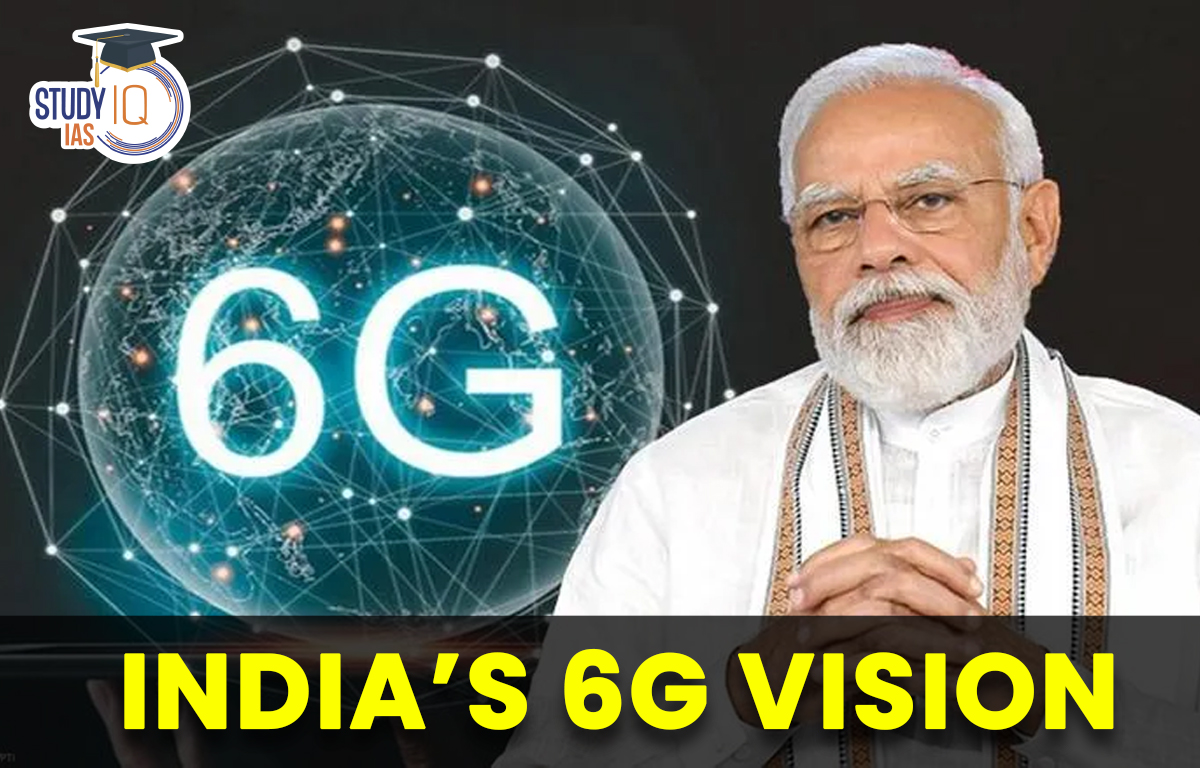Table of Contents
Context: Recently the Prime Minister unveiled the Bharat 6G Vision Document, which outlines India’s aspirations to become a global leader in 6G telecommunication technology.
About the 6G Technology
- 6G technology refers to the next generation of wireless communication technology that is expected to succeed the current 5G standard.
- It does not exist right now, but it is conceived as a far superior technology promising internet speeds up to 100 times faster than 5G.
- It is also expected to enable new applications and services, such as autonomous vehicles, remote healthcare, advanced virtual and augmented reality, and more.

Advantages of 6G Over 5G
- Faster data transfer rates: 6G is expected to provide even faster data transfer rates than 5G, potentially reaching speeds of up to 1 terabyte per second.
- Lower latency: 6G could have even lower latency than 5G, meaning there will be less delay in sending and receiving data.
- Increased connectivity: 6G is expected to provide greater connectivity than 5G, potentially connecting up to one million devices per square kilometer.
- Improved reliability: 6G is expected to be more reliable than 5G, potentially offering 99.999% reliability for wireless communications.
- Enhanced energy efficiency: 6G could be more energy-efficient than 5G, which would lead to longer battery life for devices and reduce energy consumption.
What is Bharat 6G Vision Document?
- The document outlines India’s roadmap and vision for the development and implementation of 6G technology in the country.
- The document aims to guide and coordinate India’s efforts towards achieving a leadership position in the development and deployment of 6G technology.
- The document was prepared by the Technology Innovation Group (TIG) under the Ministry of Electronics and Information Technology, Government of India.
What are the Major Highlights of the Bharat 6G Vision Document?
Bharat 6G Mission
- India’s 6G mission in two phases: the first one from 2023 to 2025 and the second one from 2025 to 2030.
- Phase 1: Support will be provided to explorative ideas, risky pathways and proof-of-concept tests.
- Phase 2: The focus will be on commercialization of the ideas and concepts.
- An apex council will be appointed to oversee the project and deal with issues related to standardization, identification of spectrum, finances for research and development, create an ecosystem for system among many other things.
- A key focus of the council will be on new technologies such as Terahertz communication, radio interfaces, tactile internet, artificial intelligence for connected intelligence etc.
Key Recommendations to Enable Bharat 6G Mission

- The TIG has constituted six task forces to deliberate on various aspects of emerging telecom technologies and platforms in the next decade.
- The Task Forces’ key recommendations to pursue to enable the 6G Mission have been summarized below:
- Innovative funding mechanisms to support industry, startups, academia, and national laboratories to undertake R&D.
- Innovative solutions through startups that leverage the emerging 6G technologies to address key verticals such as transport, water, power grid and renewables, healthcare, education, digital twins and smart cities.
- Shared use of spectrum, particularly in the higher frequency bands where the propagation is more akin to that of light.
- New multi-sensor man-machine interfaces and devices leveraging edge cloud computing resources and AI to deliver tactile Internet, ambience awareness and realistic 3D experiences.
- Participation and contribution to global standards forums to ensure interoperability and global reach of our innovation.
- Fiber-broadband to every home and integrated dense wireless and optical network, with wireless communications primarily serving mobile users.
- Tactile Internet and Remote Operations of machines/ robots, along with near-realistic 3D rendering of virtual participants in meetings.
- Space-Terrestrial Integration for ubiquitous coverage.


 UPPSC Previous Year Question Papers, Dow...
UPPSC Previous Year Question Papers, Dow...
 Most Commonly Used Cancer Drugs and Thei...
Most Commonly Used Cancer Drugs and Thei...
 Tansen Biography, Musical Legacy and Mas...
Tansen Biography, Musical Legacy and Mas...





















